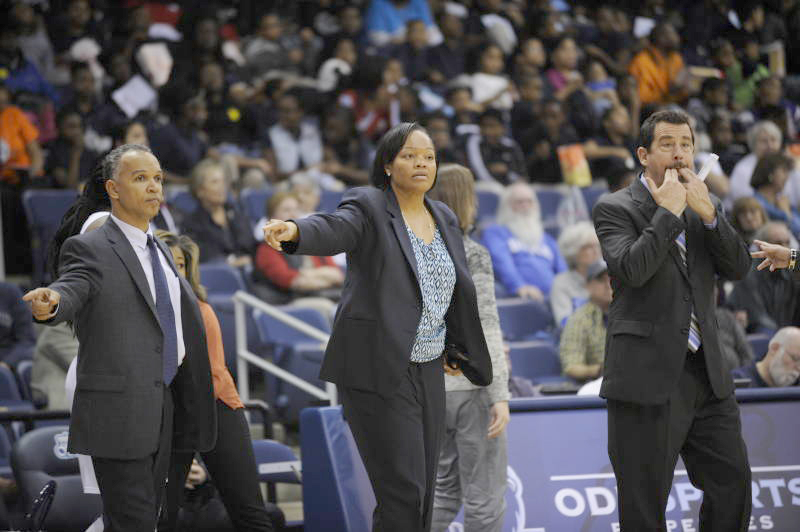It is no secret that there is an imbalance between minority athletes and minority head coaches in the National Collegiate Athletic Association. Minorities have permeated the highest ranks of college sports as players for decades, but have yet to become a consistent fixture as coaches. This trend is easily identified at the national level but can hide in plain sight locally. Although we might not readily notice it, the coaching imbalance is especially pronounced at William and Mary.
Only once has a member of a minority held a head coaching position for the Tribe in any varsity sport over the last thirty years, and it appears that only three minorities have ever held a head coaching position at the College. Trina Patterson, a native of Hampton Roads, coached the women’s basketball team from 1991 to 1999. Sgt. Jorge Perez coached volleyball for the 1974-1975 season. The College’s first Japanese-American student Arthur Matsu ’28 coached swimming for a season. Besides Patterson, the short influences of these figures largely seem like historical anecdotes belying a larger concern. The College prides itself on diversity — a claim bolstered by the athletes who represent the school and the students who root for them, but oddly not by the men and women who coach them.
Athletic competition is generally viewed as a meritocracy, one that has been an excellent incubator for genuine racial progress because the better player, no matter his or her race, will prevail over a lesser opponent at a set game. While players’ effectiveness can be reasonably quantified in statistics that encompass most aspects of their performances, coaches do not have the same luxury. Their business is much more abstract and, thus, much more subject to prejudice.
Unlike shooting a jump shot or jumping over a bar, minority coaches can’t prove their worth in irrefutable physical terms. Ambiguity allows athletic departments to ignore minority candidates without backlash, which reinforces the system by assuring that white coaches will get more head coaching experience than their minority counterparts.
At the College, where white coaches are ubiquitous and coaching turnovers are as infrequent as teaching turnovers, this cycle has been in effect for decades. Each head coaching hire must be evaluated on its own terms and the Tribe’s head coaches have been more good than bad, but this isn’t about one particular hire or one particular program, it’s across the board. No doubt, something is amiss.
This brings up a few thorny questions: Is the all-white athletic department being discriminatory in its hiring methods? Does the athletic department see white coaches as easier sells to fans and boosters than minority coaches? Is there simply a lack of qualified minority candidates?
Allegations of discriminatory hiring seem natural in this context, but the more likely culprit for the Tribe’s lack of minority head coaches is, simply, lazy coaching searches. In other words, athletic department officials have shown a reluctance to search for new coaches outside of the insular circle of current NCAA coaches or Tribe assistant coaches.
The athletic department has been content to perpetuate the system that makes head coaching experience much more accessible to white coaches than to their minority counterparts. The lack of minority head coaches at the College may be primarily an oversight, but it is becoming an increasingly embarrassing one as the boundary between negligence and racism is becoming blurred.
With Martin Luther King Jr. Day yesterday, it is important to focus on not only the numerous successes of racial progress in this country, but also on the corners of society that have proved resistant to integration. Sports reflect the society that supports them, and as long as minorities are kept from the clipboard, equality is merely a mirage.
This sad situation is not entirely the College’s fault, but it is part of the problem. Moreover, a school that graduated Mike Tomlin ’95 cannot legitimately claim to have had a lack of talented minority candidates for its head coaching positions. There are several minority assistant coaches sprinkled throughout the College’s 21 varsity programs, and it is likely that the athletic department will hire another minority as a head coach relatively soon. If so, Tribe fans will be able to root without reservations.
The College often boasts of being ahead of the curve. There is even a plaque outside the Sir Christopher Wren Building listing all of the innovations this school was the first to embrace. But much like the musket fire that follows every touchdown at Zable Stadium, the College’s aggregate head coaching hires have been hopelessly anachronistic.


































[…] From the column: […]